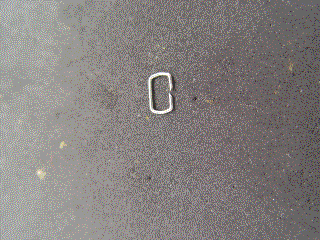|
Stapling |
Stapling is used to:
-
Securely close blood vessels that otherwise might bleed.
-
Bring together tissues that you want to stay together. For example, following a cesarean section, you will want to suture together the cut edges of the uterus. This will promote healing that is both prompt and anatomically correct.
Staples come in a variety of materials, such as stainless steel, titanium, and some biodegradable materials.
They are easy to use, fast, generally less crushing to tissues, and the metal staples are non-reactive to tissues. If placed inside the abdomen, they must remain in place and may interfere with future imaging studies (x-rays, MRI's). Staples used to close the skin give cosmetically good results, but must be removed after several days to prevent permanent marking of the skin.
Staplers usually operate in a double-action mode. Squeezing the handle to the first stop ("cocking") brings the tips of the staple to an exposed position. Squeezing the handle past the first stop to the second stop "fires" the stapler, and bends the staple in a position to hold tissue together.
 When
closing skin with staples, one person holds each side of the incision with small
tissue forceps, slightly everting the skin. The other person cocks the stapler,
places it over both skin edges and fires it, stapling the tissues together.
Staples are placed relatively close together, evenly supporting the skin edges.
Staples should not be used to bring skin together requiring tension. If the skin
edges are quite far apart, a better strategy is to use subcutaneous sutures to
bring the skin edges in close approximation before applying staples.
When
closing skin with staples, one person holds each side of the incision with small
tissue forceps, slightly everting the skin. The other person cocks the stapler,
places it over both skin edges and fires it, stapling the tissues together.
Staples are placed relatively close together, evenly supporting the skin edges.
Staples should not be used to bring skin together requiring tension. If the skin
edges are quite far apart, a better strategy is to use subcutaneous sutures to
bring the skin edges in close approximation before applying staples.